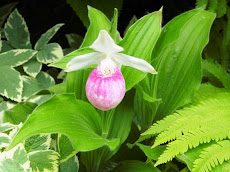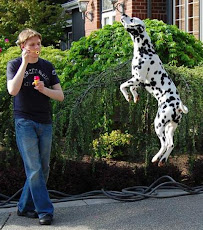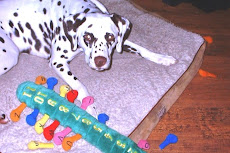Happy Birthday to me, and a significant one it is. Today I am 62 years old! How can that be? I don't FEEL 62 years old, at least not most of the time. Mostly I feel just the way I've always felt. Guess I'm lucky that way, but I work at it too. This was my first birthday since joining Facebook, and it's kind of cool having dozens of on-line "friends" wish you Happy Birthday. Seems like a nice connection.
When I was young I assumed that by the age of 62 I would be retired, or perhaps just playing at a "for fun" job, like working in a garden store during the busy season, or volunteering at Como Park. Of course I also assumed that I would still be married to David, and that his salary would make retirement possible. I also assumed that my stocks & bonds would be worth something, which is definitely not the case. How things change! David is retired now, but married to Judy who makes far more than he ever made, so his retirement will be comfortable. Do I resent that? Nope. I've been divorced for over 20 years and have no regrets.
I've also been working at my job for 30 years, which is pretty amazing as I started working for MNDOT as a temp 31 one years ago. Who ever guessed that I would still be there? At least for now, although the security of state jobs no longer exists. If MNDOT decides to offer the retirement buyout, with two years of paid health coverage, I won't be one of those who decides to go. I'm TOO YOUNG to retire, still enjoy me job, get high on the stress, and know that the challenges are good for my brain. Although my assorted hobbies would keep me busy, retirement now would not leave me with enough money to pursue them, so there's really no point in considering it. Living in an apartment with a cat and a canary, and relying on public transportation, doesn't sound like a good match!
Thursday, July 8, 2010
Wednesday, July 7, 2010
Out Of Time Already

Had to pack up some fish that will be picked up today, and enter a couple of shows with noon closing, and already I am out of time. Guess I will have to settle for this cute picture of Lucy (Argus/Boji) splashing in Lake Superior. Hopefully when Penny is finished we can bring Lucy down and show her in the states, IF we can pry her away from her family for a couple of months!
Sugar is not co-operating and will probably not be ready to breed this weekend. Her owner may have to drive all the way to Minnesota next week, rather than meeting me halfway in Missouri. Or we can do chilled semen. We shall see. Tess as not come in season yet - she's the Watson daughter we are leasing for a litter. Really excited about that breeding. Hopefully Sugar or Tess produce a pup for ME to keep.
Tuesday, July 6, 2010
Who Stole The Weekend?

OK, who stole my weekend? How can it be over already? Three day weekends seem so long at the beginning, but when they're over you always wonder how they slipped by so quickly. "Sleeping in" unti 7:00 seems luxurious, but it does eat away at the allotted time. I could have been "doing something". My self-imposed guilt about sitting around is always right below the surface. Although I got a lot of projects completed, it would take more than 3 days to catch up on the things that really need to be done around here! So I keep pecking away, little project by little project, and by the time they are all completed it will be time to start over again. Maybe it would be easier to decide they don't need doing after all, but there comes a time with the layers of dust on the blinds is more than even I can ignore!
So nice to see my Aunt Karen & Uncle Gordon who were here from California. Gordon still makes the trip by car, but says this will be the last year for that. He must be close to 80 and that's a long trip at any age. We went to dinner with them, Karen & Gordon, my mother, my daughter Jess, plus Ron & I. Had a great time and did a lot of laughing. I took some video clips, and Jess & Karen took some pictures. Karen brought along pictures of my cousins & their families. Because everyone is in California, I really don't know them as "family", something I regret.
She also brought old family pictures for us. I brought them home, will pass them on to Jess, and they will end up with my sister Kris who is the family historian. Lots of pictures of my father as a boy and a young man, and pictures of my mom and dad as newly weds. Old family pictures of relatives I didn't know but also pictures of my brother, sister and I at various ages - some of the pictures are ones I've never seen, particularly the pictures of my brother during his "hippy period" and my sister as a teenager. Because I was the oldest, I was out of the house at the time. I'll scan some of the pictures to save. Although many are old and faded, they are easy enough to enhance on the computer.
The picture at the top was part of the group Karen had. That's my Beagle "Robbie", the first Rob. (The second "Rob" was a wonderful Dalmatian.) Robbie was a great family dog, and a darned good obedience dog too. He was very competitive and always placed well in his classes, winning a few of them with very high scores including 198.5 and 199 (our of 200). I took obedience competition seriously and learned a lot training Rob. Rob was trained all the way through Utility, but never competed after Novice as he limped, and limping dogs can be disqualified. Hip x-rays showed that he was dysplastic, very dysplastic. Nope, it's not just Labradors and German Shepherd Dogs who can have Hip Dysplasia. No doubt that's the reason I have always been so adamant about doing all available health testing on my Dals.
Heard yesterday that one of my competitors was bragging how many times their dog had beaten Argus. Yep, the dog has beaten Argus from time to time, although not nearly as often as Argus has beaten that dog - no one wins all the time, but why would you brag about it to a stranger, someone from another breed even? Some people are odd that way. The odder part of the story is that this person claims that I "trashed" the dog on my Blog. Hahahahaha. Can't recall that I've even mentioned the dog on my blog, but if it will make them happier I can do that today. Pretty markings, beautiful face, lovely temperament, adequate mover (but more like a Dobe gait than a typical Dal gait), a bit lacking in breed type, but a handsome quality dog who will no doubt beat Argus again, and deservably so. If dogs are healthy, attractive and have good dispositions they do not deserve to be trashed by anyone. Not even me!
Back to work . . .
Sunday, July 4, 2010
Something's Fishy . . .
Seems as if I rarely mention the fish these days. It's not as if I am not as interested, or that I have fewer fish. On the contrary, the numbers and variety have actually been increasing this summer, and three tanks that sat empty for several months have now been redone and are occupied by new residents. The fishkeeping did suffer a bit after I broke my ankle, but fortunately Laurie was there to help with massive water changes when it first happened, and I was able to keep up with enough changes to keep the fish healthy. The keys to successful fishkeeping include appropriate temperature, sufficient space, adequate diet and WATER CHANGES. The last point can't be emphasized enough, and neglecting that is the reason many people are not successful fishkeepers.
Fish live in a limited volume of water and the quality of that water degrades over time. Fish waste, decayed plant materials, and uneaten food all break down and affect the water chemistry. If there are no water changes, the fish are slowly pickled, and although they will survive for some period of time as they acclimate to the increasingly toxic environment, it isn't possible to add any new fish, who will quickly die when exposed to poor water quality. Water changes don't mean emptying and scrubbing the tank, it means replacing an appropriate amount of water on a regular basis. Water from the same source, adjusted to a similar temperature, with the proper chemicals added to eliminate the ammonia or chloramines used by the city to kills bacteria (and fish as well!). If water changes are done regularly, it is safe to replace 90% of the water everyday if one desires. If the water changing has been put off for too long, it's necessary to do smaller amounts so that the change does not shock and kill the fish. I try to do 40% every two weeks on the larger established tanks containing adult fish. If I am dealing with a smaller tank (the water quality degrades more quickly), am growing out young fish, or trying to get adult fish to spawn, I do water changes at least weekly.
I've been fortunate to spawn a variety of fish, including domestic & wild Bettas, domestic & wild livebearers, Paradise fish, South & Central American cichlids, Tanganyikan cichlids, several kinds of Gobies & Gudgeons, catfish, and other less common species, such as Badis. Some species breed no matter what - I often joke that many kinds of cichlids could breed in Kool Aid, while others have never been successfully spawned in captivity. Some livebearers are very easy to breed, while others live out their lives without ever producing offspring, no matter what the fishkeeper tries. I particularly like wild livebearers, especially the ones that are extinct or endangered in the wild. Goodeids from Mexico are often victims of habitat loss and a significant number of species only exist in the aquariums of hobbyists.
Although many kinds of fish do just fine on dry flake food, all of them do better with the addition of some frozen or live foods, and some of them will only eat live foods. We often keep live blackworms (in the refrigerator) and they work well to get some species of cichlids to spawn. Ina the winter we can also keep live glassworms in the fridge. Some fishkeepers raise white worms & grindal worms, while microworm & vinegar eels are raised for tiny fry. Almost all fish love newly hatched baby brineshrimp, and they are almost essential for raising some kinds of fry. In the summer some fishkeepers collect (or even raise) mosquito larvae, and fishkeepers often raise tubs of daphnia. The live foods do add to the work involved in keeping fish, but they also increase the success rate in both keeping and spawning fish.
My 35 gallon pond was going to be used for spawning fish this summer - my skiffia (a species of goodeid) did well outdoors two years ago - but I decided instead to raise daphnia in the pond. I've raised it in 5 gallon buckets and 20 gallon aquariums, but decided the pond ought to provide a useful amount of live food. I was also given two bags of mosquito larvae yesterday, so the Betta picta dined in style. I checked to be sure that all the larvae were consumed, so I won't have a basement full of mosquitos in a few days.

The newest fry here are the Red-finned Halfbeaks, amongst my favorite fish. I have a reverse trio (two males and a female) and the female produces youngsters on a regular basis. Because the adults will eat the fry, I only get fry if I see them first. I could take mom out and let her spawn in a seperate tank or breeder box, but I'm not actually trying to breed them anymore. I just want enough to eventually replace the adults . My big Guppy tank has 3 young Halfbeaks, plus the 4 new babies that I rescued on Friday night. The adolescents swim with the Guppies & Corys that live in the tank, but the newborns have a small net tank that sits in the big tank, as they will be snack size for a couple of months. The oldest of the adolescents will soon be large enough to pick off Guppy fry, so he may move in with the adults soon - assuming he will be accepted. We shall see.
I've also got young Limia melanogaster (Black-Bellied Limias) and Limia vitatta (Cuban Limias). Both Limia species are colony breeders and the fry swim safely with the adults. That's also true of my little colony of Lamprologus multifasciatus - the baby Multis swim with their older sibs and parents, and like many cichlid species they are safe from predation. Another livebearer species that is doing well for me is the Giardinus metallicus, or Black-chinned livebearer There are always fry of various ages in that tank. The Goodeid tank is the home to Ataeniobius toweri (Blue-tailed Goodeids) & Illyodon furcidens and there are about 20 youngsters in that tank too - but until they are older I won't know for sure which species they are - or perhaps both species have spawned recently. The Xiphophorus alverazi a handsome wild swordtail species always have youngsters of various ages, and I have distributed a number of them in the area.
Fish live in a limited volume of water and the quality of that water degrades over time. Fish waste, decayed plant materials, and uneaten food all break down and affect the water chemistry. If there are no water changes, the fish are slowly pickled, and although they will survive for some period of time as they acclimate to the increasingly toxic environment, it isn't possible to add any new fish, who will quickly die when exposed to poor water quality. Water changes don't mean emptying and scrubbing the tank, it means replacing an appropriate amount of water on a regular basis. Water from the same source, adjusted to a similar temperature, with the proper chemicals added to eliminate the ammonia or chloramines used by the city to kills bacteria (and fish as well!). If water changes are done regularly, it is safe to replace 90% of the water everyday if one desires. If the water changing has been put off for too long, it's necessary to do smaller amounts so that the change does not shock and kill the fish. I try to do 40% every two weeks on the larger established tanks containing adult fish. If I am dealing with a smaller tank (the water quality degrades more quickly), am growing out young fish, or trying to get adult fish to spawn, I do water changes at least weekly.
I've been fortunate to spawn a variety of fish, including domestic & wild Bettas, domestic & wild livebearers, Paradise fish, South & Central American cichlids, Tanganyikan cichlids, several kinds of Gobies & Gudgeons, catfish, and other less common species, such as Badis. Some species breed no matter what - I often joke that many kinds of cichlids could breed in Kool Aid, while others have never been successfully spawned in captivity. Some livebearers are very easy to breed, while others live out their lives without ever producing offspring, no matter what the fishkeeper tries. I particularly like wild livebearers, especially the ones that are extinct or endangered in the wild. Goodeids from Mexico are often victims of habitat loss and a significant number of species only exist in the aquariums of hobbyists.
Although many kinds of fish do just fine on dry flake food, all of them do better with the addition of some frozen or live foods, and some of them will only eat live foods. We often keep live blackworms (in the refrigerator) and they work well to get some species of cichlids to spawn. Ina the winter we can also keep live glassworms in the fridge. Some fishkeepers raise white worms & grindal worms, while microworm & vinegar eels are raised for tiny fry. Almost all fish love newly hatched baby brineshrimp, and they are almost essential for raising some kinds of fry. In the summer some fishkeepers collect (or even raise) mosquito larvae, and fishkeepers often raise tubs of daphnia. The live foods do add to the work involved in keeping fish, but they also increase the success rate in both keeping and spawning fish.
My 35 gallon pond was going to be used for spawning fish this summer - my skiffia (a species of goodeid) did well outdoors two years ago - but I decided instead to raise daphnia in the pond. I've raised it in 5 gallon buckets and 20 gallon aquariums, but decided the pond ought to provide a useful amount of live food. I was also given two bags of mosquito larvae yesterday, so the Betta picta dined in style. I checked to be sure that all the larvae were consumed, so I won't have a basement full of mosquitos in a few days.

The newest fry here are the Red-finned Halfbeaks, amongst my favorite fish. I have a reverse trio (two males and a female) and the female produces youngsters on a regular basis. Because the adults will eat the fry, I only get fry if I see them first. I could take mom out and let her spawn in a seperate tank or breeder box, but I'm not actually trying to breed them anymore. I just want enough to eventually replace the adults . My big Guppy tank has 3 young Halfbeaks, plus the 4 new babies that I rescued on Friday night. The adolescents swim with the Guppies & Corys that live in the tank, but the newborns have a small net tank that sits in the big tank, as they will be snack size for a couple of months. The oldest of the adolescents will soon be large enough to pick off Guppy fry, so he may move in with the adults soon - assuming he will be accepted. We shall see.
I've also got young Limia melanogaster (Black-Bellied Limias) and Limia vitatta (Cuban Limias). Both Limia species are colony breeders and the fry swim safely with the adults. That's also true of my little colony of Lamprologus multifasciatus - the baby Multis swim with their older sibs and parents, and like many cichlid species they are safe from predation. Another livebearer species that is doing well for me is the Giardinus metallicus, or Black-chinned livebearer There are always fry of various ages in that tank. The Goodeid tank is the home to Ataeniobius toweri (Blue-tailed Goodeids) & Illyodon furcidens and there are about 20 youngsters in that tank too - but until they are older I won't know for sure which species they are - or perhaps both species have spawned recently. The Xiphophorus alverazi a handsome wild swordtail species always have youngsters of various ages, and I have distributed a number of them in the area.
Subscribe to:
Comments (Atom)















































